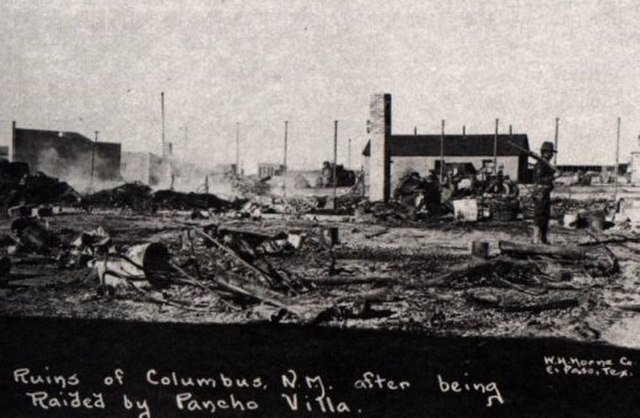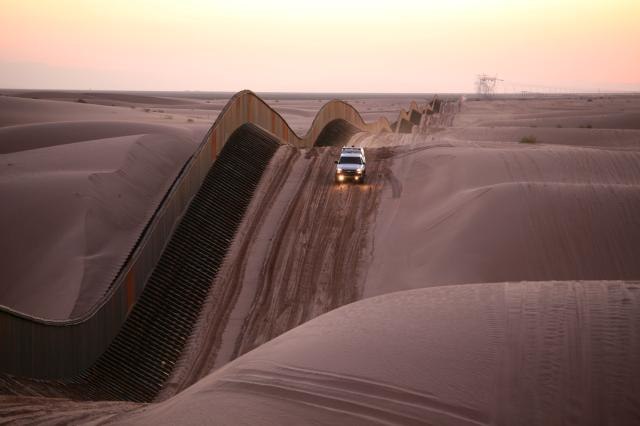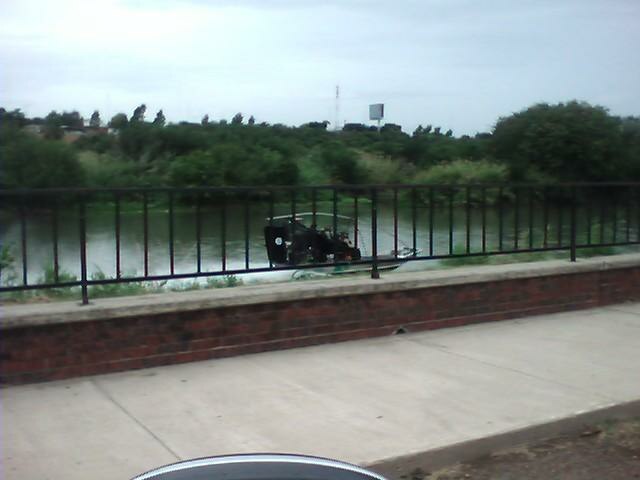Mexican Border War (1910–1919)
The Mexican Border War, or the Border Campaign, was a series of military engagements which took place in the Mexican–American border region of North America during the Mexican Revolution. The period of the war encompassed World War I, and the German Empire attempted to have Mexico attack the United States, as well as engaging in hostilities against American forces there itself.
Mexican statesman, revolutionary and soon-to-be president Francisco Madero with his troops in 1910
American Magonistas after the First Battle of Tijuana in 1911
Front row, L-R: Mexican Generals Álvaro Obregón and Pancho Villa with American General John J. Pershing. Second row, far right: Pershing aide Lt. (future General) George S. Patton. At Fort Bliss, Texas, 1913.
Columbus, New Mexico, after Pancho Villa's attack on the border town
Mexico–United States border
The Mexico–United States border is an international border separating Mexico and the United States, extending from the Pacific Ocean in the west to the Gulf of Mexico in the east. The border traverses a variety of terrains, ranging from urban areas to deserts. The Mexico–U.S. border is the most frequently crossed border in the world with approximately 350 million documented crossings annually. It is the tenth-longest border between two countries in the world.
The vast majority of the current border was decided after the Mexican–American War (1846–1848). Most of the border is settled on the Rio Grande River on the border of Texas and northeastern Mexico. To the left lies San Diego, California and on the right is Tijuana, Baja California. The building in the foreground on the San Diego side is a sewage treatment plant built to clean the Tijuana River.
U.S. Border Patrol at Algodones Sand Dunes, California. The fence on the U.S.–Mexican border is a special construction of narrow, 4.6 m (15 ft) tall elements, that are movable vertically. This way, they can be lifted on top of the ever shifting sand dunes.
Border Patrol patrolling the Rio Grande in an airboat in Laredo, Texas
The start of the border fence in the state of New Mexico – just west of El Paso, Texas








